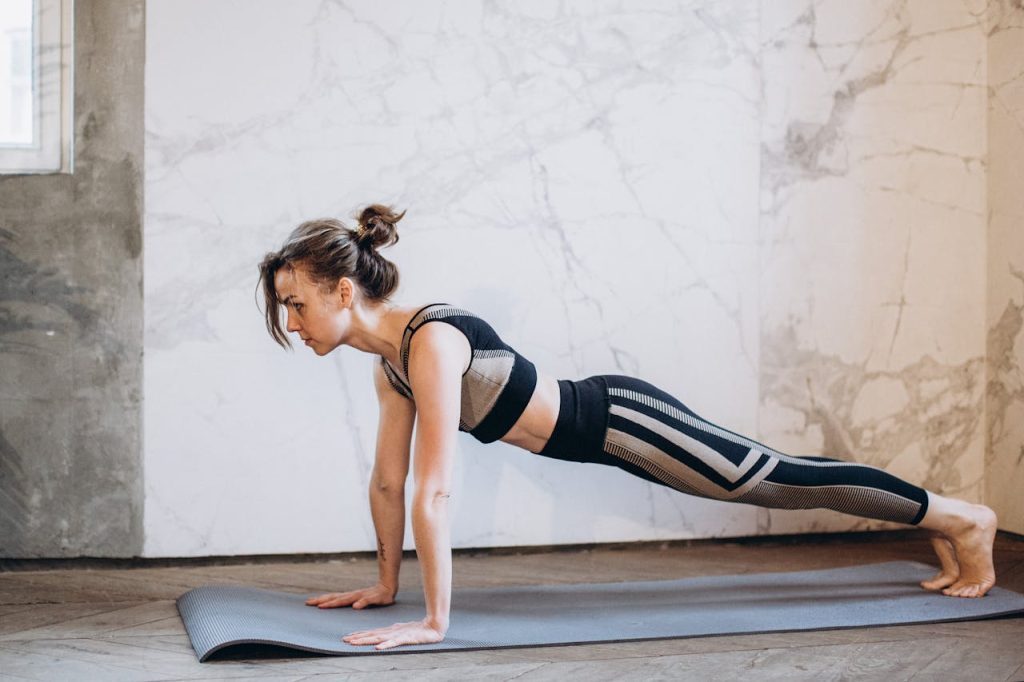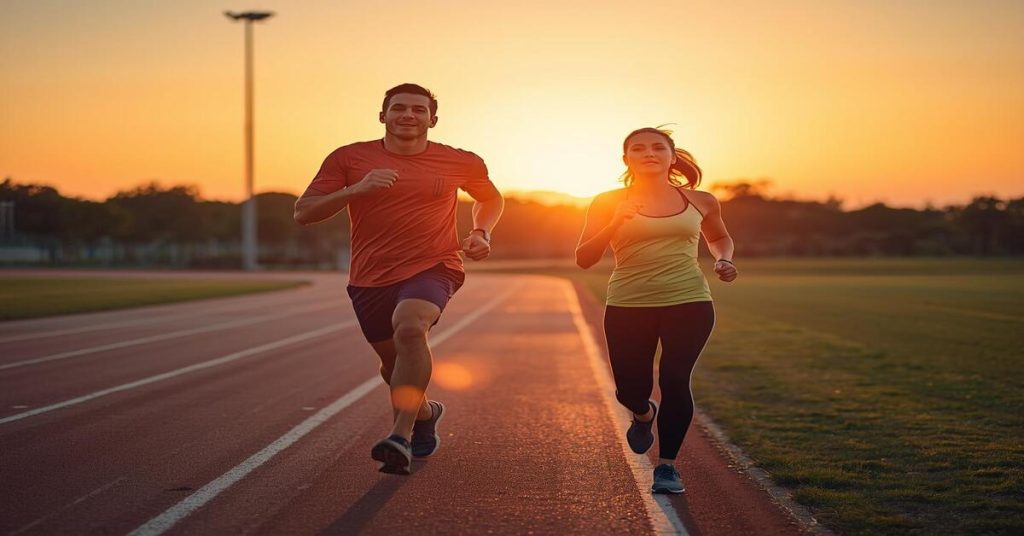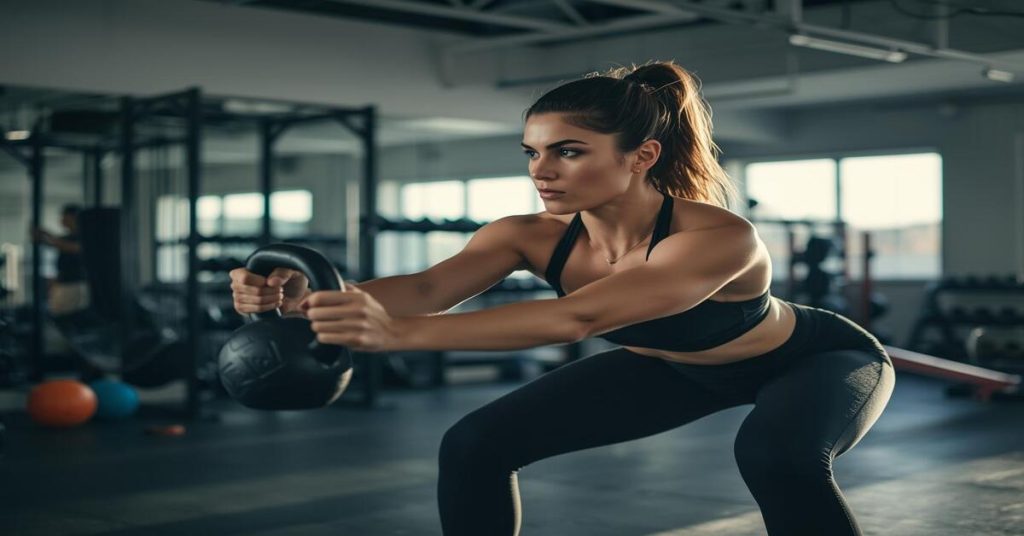10 Powerful Bodyweight Exercises for Beginners at Home (No Equipment) 🏡💪
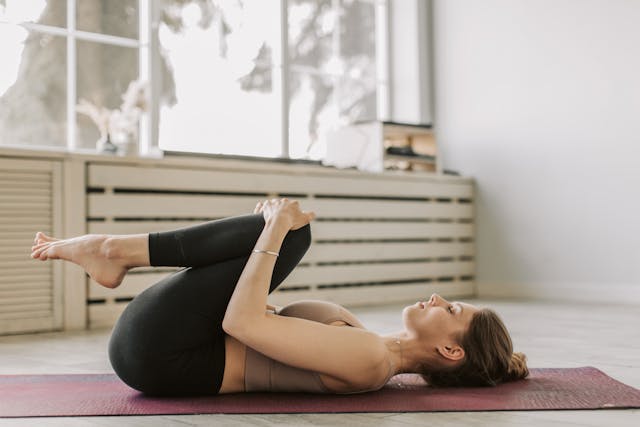
Finding a sustainable way to start fitness at home shouldn’t feel overwhelming. With just your body, a little floor space, and the right plan, you can build strength, mobility, and confidence—fast. This guide gives you 10 powerful beginner bodyweight exercises at home that require zero equipment, complete with form cues, breathing tips, and a simple 7‑day routine to get moving safely.
Why Bodyweight First? (Start Smart, Stay Consistent) ✅
Starting with beginner bodyweight exercises at home is the smartest way to build a solid fitness foundation. These exercises teach you control, balance, and proper joint alignment before you add external load. That means fewer injuries, better posture, and quicker progress as you move forward. You’ll also learn how to activate the right muscles—glutes, core, and back—so every rep counts. Most importantly, there’s no friction: no commute, no machines, and no excuses. Just you, your breath, and consistent results. ✨
Warm‑Up in 5 Minutes (Don’t Skip This) 🔥
Before starting your beginner bodyweight exercises at home, spend at least 5 minutes to properly warm up. A good warm-up prepares your joints, activates your muscles, and elevates your heart rate so you can perform better and avoid injuries. Try this simple sequence:
- March in place (30s)
- Arm circles (30s)
- Cat‑cow spine waves (30s)
- Hip circles (30s)
- Glute bridges (10 reps)
- Inchworm to plank (4 reps)
- Bodyweight squats (10 reps)
Breathe through your nose if you can, exhale gently on effort. Feel warmth in your hips, shoulders, and mid‑back before starting the main set of beginner bodyweight exercises at home for the best results. 🔥
Read more: 7 Science-Backed Benefits of Morning Workouts You Shouldn’t Ignore
The Foundation: Master These 10 Beginner Bodyweight Exercises at Home 🧱
How to read: Each move below includes what it trains, step‑by‑step form, breathing, common mistakes, and easy progressions. Do them slowly the first week. Quality > quantity.
1) Bodyweight Squat 🦵
Why it matters: Builds legs and glutes, improves ankle/hip mobility, and teaches you to sit/stand safely. It’s the base for daily life strength.
Form: Stand feet shoulder‑width, toes slightly out. Brace your core like you’re about to cough. Sit your hips back and down as if to a chair, knees tracking over mid‑feet. Keep chest proud, heels grounded. Stand up by pushing the floor away, squeeze glutes at top.
Breathing: Inhale down, exhale up through pursed lips.
Avoid: Knees collapsing inward, heels lifting, rushing depth.
Progressions: Box squat to a chair → air squat to parallel → tempo squats (3‑sec down).
Cues: “Knees track toes,” “Ribs down,” “Drive through mid‑foot.”
2) Incline Push‑Up (Table/Counter) 🧑🍳
Why it matters: Safer shoulder angle and reduced load so beginners build pressing strength without elbow/neck strain.
Form: Hands on a sturdy table, palms under shoulders, body in a straight line from head to heels. Lower chest toward hands, elbows at ~45°. Press up, keep ribs tucked.
Breathing: Inhale down, exhale as you press.
Avoid: Flaring elbows, sagging hips, craning neck.
Progressions: Higher surface → lower surface → knee push‑ups on floor → full push‑ups.
Cues: “Zip your ribs,” “Squeeze glutes,” “Push the world away.”
3) Glute Bridge 🍑
Why it matters: Wakes up sleepy glutes, supports lower back, and improves hip extension for walking and climbing stairs.
Form: Lie on back, knees bent, feet hip‑width. Tilt pelvis slightly (flatten lower back), then press through heels to lift hips until knees‑hips‑shoulders form a line. Pause, lower with control.
Breathing: Exhale up, inhale down.
Avoid: Overarching lower back, flaring ribs, pushing through toes.
Progressions: 2‑leg bridge → heels farther from hips → pause at top → single‑leg bridge (later).
Cues: “Crack a nut between glutes,” “Shins vertical at top.”
4) Dead Bug (Core) 🪲
Why it matters: Trains deep core and spinal stability—key for pain‑free squats, pushes, and daily lifting.
Form: Lie on back, arms up, knees over hips at 90°. Press lower back into floor. Extend opposite arm and leg slowly without losing that back‑to‑floor connection; return and switch.
Breathing: Exhale during extension, inhale returning; keep ribs down.
Avoid: Arching low back, moving fast, shrugging shoulders.
Progressions: Tap heel only → full leg extension → add 2‑sec pause at reach.
Cues: “Zip up jeans,” “Crush the grape under low back.”
5) Assisted Reverse Lunge (Chair Support) 🪑
Why it matters: Single‑leg strength builds balance, protects knees, and evens out side‑to‑side imbalances.
Form: Lightly hold a chair. Step one foot back, drop back knee toward floor, front shin vertical. Drive through front heel to stand tall. Switch sides.
Breathing: Inhale down, exhale up.
Avoid: Front knee collapsing inward, leaning forward excessively.
Progressions: Hands‑free → deeper range → alternating jumping lunges (much later).
Cues: “Tall torso,” “Front knee tracks toes,” “Push through heel.”
6) Plank (Knees or Incline) 🧱
Why it matters: Builds anti‑extension core strength that carries over to every movement.
Form: Elbows under shoulders, forearms on floor or hands on bench; body in line. Start with knees down or use an incline if needed. Hold with glutes squeezed and ribs stacked over pelvis.
Breathing: Slow nasal breaths; don’t hold breath.
Avoid: Sagging hips, piked hips, shrugged shoulders.
Progressions: 15s → 30s → 45s; eventually full plank on toes.
Cues: “Squeeze glutes,” “Press the floor,” “Long spine.”
7) Doorway Row (Towel Row) 🚪
Why it matters: Balances all the pushing by training back and biceps, improves posture from screen time.
Form: Loop a sturdy towel around a secure door handle (lock the door!), lean back holding both ends, body straight. Pull chest toward the door, elbows close to ribs; control back down.
Breathing: Exhale as you pull, inhale as you extend.
Avoid: Rounding shoulders, rocking hips, slippery door. Safety first.
Progressions: Stand more upright (easier) → step feet forward to increase angle → tempo rows.
Cues: “Shoulders down‑and‑back,” “Lead with chest,” “Squeeze mid‑back.”
8) Hip Hinge (Good Morning Pattern) 🦴
Why it matters: Teaches you to hinge from the hips—not your back—protecting the spine and loading hamstrings/glutes.
Form: Soft knees, hands on hips. Push hips straight back like closing a car door, spine long, shins vertical. When hamstrings stretch, drive hips forward to stand tall.
Breathing: Inhale back, exhale as you stand.
Avoid: Rounding back, bending knees too much, craning neck.
Progressions: Wall tap hinge → tempo hinge → add a backpack later if desired.
Cues: “Back pockets to the wall,” “Ribs over hips,” “Crown long.”
9) Wall Sit 🧊
Why it matters: Builds leg endurance and mental grit with joint‑friendly isometric work.
Form: Back flat against wall, slide down until knees ~90°, feet hip‑width, weight mid‑foot. Hold, breathe calm, keep low back gently pressed to wall.
Breathing: Smooth nasal breathing; relax the jaw.
Avoid: Knees caving, feet too close to wall, holding breath.
Progressions: 20s → 40s → 60s; add gentle calf raises at the bottom later.
Cues: “Knees track toes,” “Press low back,” “Own the shake.”
10) Bird Dog 🐶
Why it matters: Integrates core with glutes and upper back; great for posture and low‑back resilience.
Form: Hands under shoulders, knees under hips. Extend opposite arm and leg long; keep hips level, ribs down. Pause, then switch sides with control.
Breathing: Exhale during reach, inhale on return.
Avoid: Tilting hips, lifting leg too high, collapsing shoulder.
Progressions: 2‑sec pause → 3‑sec pause → slow controlled reps with a book on low back (challenge!).
Cues: “Spill no coffee on your low back,” “Reach long, not high.”
Read more: Complete Fitness and Exercise Guide for a Healthy Lifestyle 💪🏃♀️0
How to Put It Together (Beginner‑Friendly 7‑Day Plan) 📅
Once you’ve learned the basics, it’s time to structure your beginner bodyweight exercises at home into a simple plan. This 7‑day schedule helps you stay consistent, build strength safely, and avoid burnout.
Goal: 20–30 minutes/day. Focus on quality reps and leave 1–2 reps “in the tank” on each set for better recovery and progress.
- Day 1 – Full Body A: Bodyweight Squat 3×8, Incline Push‑Up 3×6–10, Glute Bridge 3×10, Dead Bug 2×8/side, Plank 2×20–30s.
- Day 2 – Move & Mobilize: 20‑minute brisk walk + 5‑minute hip/shoulder mobility to stay flexible and support your beginner bodyweight exercises at home.
- Day 3 – Full Body B: Reverse Lunge 3×6/side, Doorway Row 3×8, Hip Hinge 3×10 (tempo 3‑1‑1), Wall Sit 2×30–45s, Bird Dog 2×8/side.
- Day 4 – Active Recovery: Gentle yoga or a 25‑minute easy cycle/walk for recovery.
- Day 5 – Full Body A (repeat): Add 1–2 reps per set if the previous session felt easy. This helps you steadily progress your beginner bodyweight exercises at home.
- Day 6 – Steps & Core: 6–8k steps + 10‑minute core circuit (Dead Bug, Plank, Bird Dog).
- Day 7 – Rest & Reset: Light mobility, breathing drills, and a 10‑minute reflection walk.
Follow this plan for at least 4 weeks. It builds consistency and ensures all muscle groups get worked evenly while performing beginner bodyweight exercises at home. Adjust rest days as needed, but avoid skipping workouts back-to-back to stay on track. 🔥
Common Beginner Mistakes (And Simple Fixes) 🛠️
When starting beginner bodyweight exercises at home, many people make small mistakes that slow progress or even cause injuries. Avoid these common errors and use the simple fixes below to stay on track:
- Rushing Reps: Moving too fast reduces control and effectiveness. Count “one‑two‑three” on the way down and focus on form. Slow tempo makes beginner bodyweight exercises at home safer and more effective.
- Shrugged Shoulders in Push‑ups/Rows: Keep shoulders “down‑and‑back” before every set. This improves posture and prevents neck pain.
- Knees Cave on Squats/Lunges: Press your knees outward so they track over the second toe. This protects your joints and improves strength during beginner bodyweight exercises at home.
- Holding Breath: Holding your breath can cause dizziness. Practice quiet nasal breathing and exhale during effort for better energy control.
- All‑or‑Nothing Mindset: Skipping workouts because you don’t have much time is a mistake. Even 10 minutes of beginner bodyweight exercises at home can make a difference.
- No Balance with Pulling: Focusing only on push movements like push‑ups can cause muscle imbalance. Include pulling moves like Doorway Rows to balance your routine.
- Skipping Warm‑Up: A proper 5‑minute warm‑up primes your joints and muscles for better performance and fewer injuries.
By avoiding these mistakes and focusing on proper form, your beginner bodyweight exercises at home will deliver faster results with less risk. ✅
FAQ (Quick Answers) ❓
Q: How many days per week should I do these beginner bodyweight exercises at home?
A: Aim for 3 strength days (20–30 min) + 2–3 light activity days. Consistency beats intensity early on.
Q: I get knee aches in squats—what to change?
A: Reduce depth, use a chair (box squat), slow tempo, push knees to track toes, and keep heels down. Strengthen glutes with bridges.
Q: Can I lose fat with only bodyweight?
A: Yes—pair these workouts with a modest calorie deficit, daily steps, and proper sleep. Muscle + movement = higher energy burn.
Q: When to move from incline to floor push‑ups?
A: When you can do 3×12 on a given incline with pristine form, drop the surface height or try 2–3 reps from the floor.
Q: How long till I see results?
A: Most beginners feel stronger and more energized within 2–3 weeks; visible changes often follow by weeks 4–6 with nutrition on point. 🌟
Quick Checklist (Pin This) 📌
- Warm‑up 5 min
- 4–5 moves/session, 2–3 sets, clean form
- Progress by reps or time each week
- Walk daily, sleep 7–9 hours 😴
- Track consistency, not perfection
Read more: Functional Fitness Guide: Build Strength, Mobility & Endurance for Everyday Life 💪
Call to Action (Stay Accountable) 🚀
Start today! Pick 3 moves from the list and do 2 sets each to begin building strength and confidence. These small steps with beginner bodyweight exercises at home will help you stay consistent and see results faster. Schedule your next session now and stay accountable. 💪
How to Progress Beyond the Basics 🏆
Once you feel comfortable with the core beginner bodyweight exercises at home, you’ll naturally want to progress. But progressing too fast can lead to injuries and plateaus. The key is to follow a structured approach, adding new challenges gradually. Here’s how:
1) Add Time Under Tension ⏱️
One of the safest ways to progress is by increasing the time your muscles are under tension. For example, in squats or lunges, count three seconds down and two seconds up. This slow tempo forces your muscles to work harder without adding extra weight. It’s ideal for beginners because you can do it at home with no extra equipment.
2) Increase Reps and Sets Gradually 📈
When you can complete 2–3 sets of 10–12 reps with perfect form, it’s time to add one extra set or a couple of reps per set. This ensures you are consistently building endurance and strength without overwhelming your body. Remember, small progressions lead to big results over time.
3) Reduce Rest Periods 🔄
If you want to boost calorie burn, gradually reduce your rest periods between sets. Start with 60 seconds of rest, then work your way down to 30 seconds. This creates a mini-cardio effect while still focusing on strength. Just make sure you can maintain proper form on all beginner bodyweight exercises at home.
4) Explore Single-Leg and Unilateral Movements 🦵
Unilateral exercises challenge balance and core stability. Moves like single-leg glute bridges or single-leg Romanian deadlifts make your muscles work harder. They also help correct muscle imbalances between your left and right sides, which is common in beginners.
5) Introduce Circuit Training 🔥
Circuit training involves performing multiple exercises back-to-back with little rest in between. For example, combine squats, push-ups, glute bridges, and planks into one circuit. Complete 3–4 rounds. This method improves strength, endurance, and cardiovascular health at the same time.
Common Questions About Beginner Bodyweight Exercises at Home ❓
Can I build muscle without equipment? 💪
Absolutely! By using slow tempos, higher reps, and progressive overload techniques, you can gain noticeable muscle using only beginner bodyweight exercises at home. The secret is to challenge your muscles with enough intensity and volume over time.
How do I stay motivated? 🎯
Motivation is key when working out at home. Set small, achievable goals like “Do 3 workouts this week” or “Hold a plank for 30 seconds longer.” Track your progress in a journal or app. Reward yourself with non-food treats when you hit milestones. Most importantly, remember why you started.
What if I don’t have enough space? 🏠
You don’t need a large area to complete these workouts. A 6×6 foot space is enough. Moves like squats, push-ups, and bird dogs require minimal space but deliver maximum benefits. If your space is really tight, focus on exercises that keep you in one spot, like wall sits, glute bridges, and planks.
Can I combine cardio with these workouts? 🏃♀️
Yes! Alternate your beginner bodyweight exercises at home days with cardio activities like walking, jogging, cycling, or skipping rope. Or, add short bursts of cardio (like jumping jacks or high knees) between strength exercises to keep your heart rate up.
Do I need to change my diet? 🥗
Exercise alone won’t give you the best results. Pair your training with a balanced diet that includes lean protein, complex carbs, healthy fats, and plenty of vegetables. Hydration and sleep are equally important for muscle recovery and fat loss.
Bonus: Sample 4-Week Progression Plan 📅
Here’s a simple way to progress beyond the initial 7-day plan you followed earlier:
- Week 1–2: Stick to 3–4 workouts per week, focusing on perfect form.
- Week 3: Add one extra set to each exercise and reduce rest to 45 seconds.
- Week 4: Start experimenting with unilateral movements like single-leg bridges and add a circuit finisher.
This plan ensures you’re continually challenging your body while avoiding burnout.
Read more: 💪 Mastering Functional Training for Real-Life Strength
Recovery and Mobility (Don’t Skip It) 🧘♂️
Muscles don’t grow during the workout; they grow when you rest. That’s why recovery is crucial, especially if you’re doing beginner bodyweight exercises at home. Take at least one full rest day each week. On rest days, do light mobility work like hip openers, shoulder stretches, and gentle yoga flows. This keeps your joints healthy, improves flexibility, and reduces soreness so you can train more effectively.
Building a Habit for Life 🌱
Consistency is everything. Schedule your workouts like important meetings. Try to exercise at the same time each day, whether it’s morning or evening. Create a workout corner in your home so you have a dedicated space. Celebrate small wins—these will keep you motivated long-term.
Tools That Can Help Beginners 🛠️
You don’t need expensive gear, but a few basic tools can make beginner bodyweight exercises at home more effective:
- Yoga Mat: Provides comfort for floor exercises.
- Resistance Bands: Adds gentle resistance for progression.
- Sturdy Chair or Bench: Useful for incline push-ups or step-ups.
- Timer App: Keeps track of rest periods and intervals.
These inexpensive tools can take your workouts to the next level without cluttering your space.
Tracking Your Progress 📝
To get the best results from your beginner bodyweight exercises at home, track the number of reps, sets, and hold times for each exercise. Write everything down in a simple journal or use a fitness app. Every two weeks, review your log to see where you’ve improved—whether it’s more reps, better form, or longer hold times. Seeing your progress on paper keeps you motivated and makes it easier to stay consistent with your beginner bodyweight exercises at home routine. ✅
Final Thoughts 💭
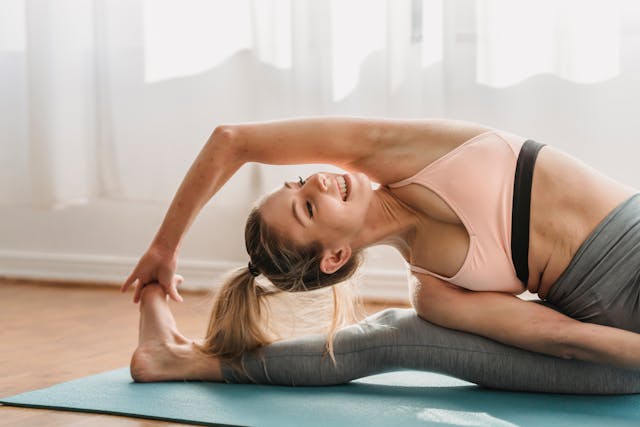
Starting a fitness journey at home doesn’t have to be complicated. By mastering these beginner bodyweight exercises at home, you’ll build a strong foundation for future progress. Focus on form, consistency, and gradual improvements. Remember, every small step forward adds up to big results over time. 💪✨
So set your schedule, commit to your plan, and trust the process. You already have everything you need—your body, your mindset, and this guide. Now it’s your turn to take action and transform your health from the comfort of your home. 🚀
If you want more expert tips on beginner bodyweight exercises at home, check out this helpful guide here:
Beginner Bodyweight Workout Tips (Nofollow).
Also, this resource shares additional training routines that can complement your beginner bodyweight exercises at home:
10 Best Bodyweight Exercises (Dofollow).
